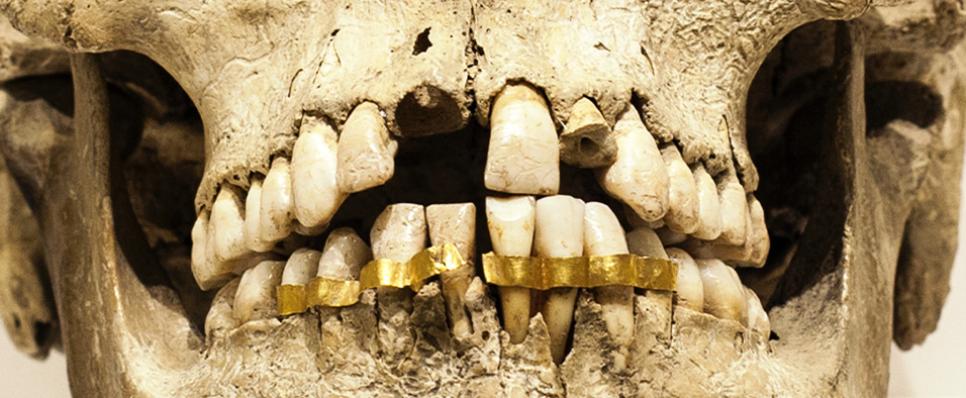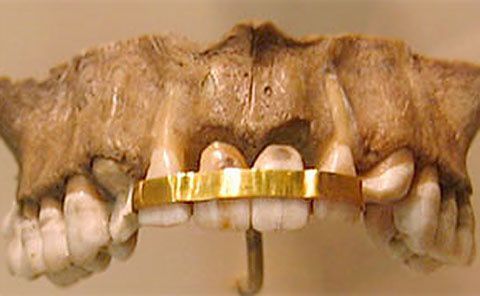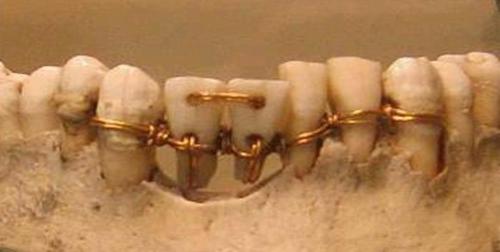Ancient Egyptians preferred gold orthodontics dentures

If you had lived in ancient Egypt, the braces in your mouth would have been golden. Two teeth connected by gold wire were discovered by the Egyptologist Hermann Junker in an Egyptian tomb in 1914, making the Egyptians the first civilisation that probably had a dental profession, a topic debated upon by both historians and dentists.

Pharaonic physicians were no strangers to reconstruction work: there have been three instances of a dental bridge with one or more lost teeth reattached by means of a gold or silver wire to the other surrounding teeth. In some cases, a bridge was made using donor teeth. However, scientists are still unsure if these works were performed during the life of the patient or after death – to tidy them up, as it were, before their burial.

The precious metal is the oldest dental restorative material, with evidence that it has been used for that purpose for at least 4,000 years. The purpose of early dental applications was decorative – as evidenced in the record of the Mayans in Central America, who were masters of cosmetic dentistry – rather than for mastication.

Like the ancient Egyptians, early Phoenicians used gold wire to bind teeth as early as 1,500 BC, and subsequently, the Etruscans and then the Romans introduced the art of creating fixed bridges from gold strips. These techniques were lost in the Middle Ages and only rediscovered in a modified form in the middle of the nineteenth century.
The use of gold in dentistry is still significant today, with annual consumption estimated to be approximately 18.9 tonnes in 2015, according to the World Gold Council. Longevity, functionality, aesthetics, and biocompatibility, together with ease of manufacture are the most important requirements of dentistry; the optimum material for dental restorations is thus a well-approved high-gold alloy.
The development of electroforming technology – think of it as electroplating – with pure gold creates new avenues for future research. But for highly stressed parts in dental restorations, electroformed pure gold is still too soft and thus has limited uses. So be careful how hard you bite.
Related Post
A shocking documentary proves that mermaids do exist
SHOCKING Revelation: Thuya, Mother of Queen Tiye, Was the Grandmother of Akhenaten and Tutankhamun—What Ancient Egyptian Secrets Did She Leave Behind?
Breaking News: Astonishing Discoveries at Karahan Tepe Confirm an Extraterrestrial Civilization is Hiding on Earth, and NO ONE Knows!
Breaking News: Researchers FINALLY Discover U.S. Navy Flight 19 After 75 Years Lost in the Bermuda Triangle!
NASA’s Secret Investigation: Uncovering the Astonishing Mystery of the UFO Crash on the Mountain!
Explosive UFO Docs LEAKED: Startling Proof That Aliens Ruled Ancient Egypt!